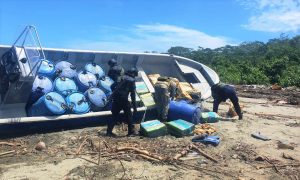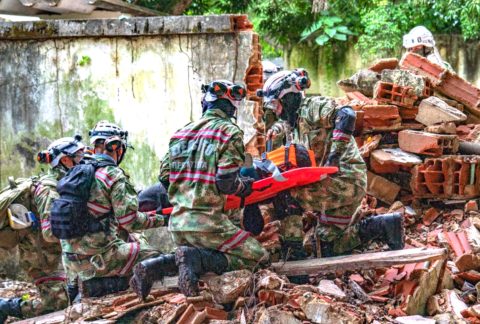The Colombian Navy’s Pacific Naval Force reported the destruction of three cocaine hydrochloride labs, each capable of producing 2 metric tons per month, in an offensive against the narco-guerrilla group National Liberation Army (ELN, in Spanish). The operations took place in Chocó department, May 11-22.
“Delegations of this war front, narcotraffickers, and terrorists operate in this area to ensure that the narcotrafficking logistics chain is fulfilled,” Colonel Wisner Paz Palomeque, commander of the 2nd Colombian Marine Corps Brigade, told Diálogo. “They are the ones who charge for the [retail] weight and are already among cocaine hydrochloride exporters.”

Authorities found two of the labs in Bajo Baudó, Chocó department. The third lab was located in Litoral del San Juan, in the far south of the same department, the Navy reported. Authorities also seized liquid and solid supplies, in addition to weapons, communication equipment, and an outboard motor boat.
Colombian Navy Rear Admiral John Fabio Giraldo Gallo, commander of the Pacific Naval Force, told Diálogo that ELN cells move around constantly, because riverine troops and units destroy their infrastructure, especially along the San Juan River and its tributaries.
“The controls that the units carry out on the waterways have reduced the entry of supplies for drug production, affecting the financial link in the narcotrafficking logistics chain,” Rear Adm. Giraldo said.
From January to May 2020, the Pacific Naval Force destroyed 18 labs operated by the ELN in the area of the Baudó and San Juan rivers. The destruction of these structures halted the annual production of 180 metric tons of coca base paste, the Navy said.
“Chocó was a department with sugar cane and rice cultivation,” Col. Paz said. But “when the FARC [Revolutionary Armed Forces of Colombia], the ELN, Clan del Golfo, and the Pacific Structure arrived, they convinced the population to change their crops for coca paste and earn a lot of money, which is later taken by their criminal cells through extortion,” he concluded.









